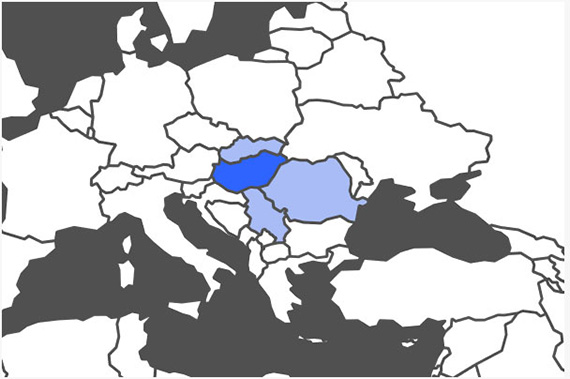Hungarian Alphabet
Letter and Name Phoneme (IPA) Sound in English
A a /ɒ/ bod, call
Á á /aː/ an extended cat, bad
B bé /b/ as by, absence
C cé /t͡s/ like tsunami
Cs csé /t͡ʃ/ as check, cheek, etching
D dé /d/ deck, wide
Dz dzé /d͡z/ like in kids
Dzs dzsé /d͡ʒ/ jam, George, bridge
E e /ɛ/ like less, cheque, edge
(É) é /eː/ like in "same", without the /I/ part of the diphthong /eI/
F éf /f/ café, hey
G gé /ɡ/ get, leg, go
Gy gyé /ɟ/ (not used in English; halfway between /ɡ/ and /dʒ/. Mostly similar to during)
H há /h/ Basic: h1. behind 2. <mute> 3. Loch 4. human
I í /iː/ thick, thin
J jé /j/ you, yes, faith
K ká /k/ key, kiss, weak
L el /l/ leave, list
Ly elly, el-ipszilon /j/ hey, ray
M em /m/ mind, assume, might
N en /n/ thing, lying (before k, g), need, bone (anywhere else)
Ny eny /ɲ/ new, (niño/niña (Spanish))
O o /o/ force, sorcerer
Ó ó /oː/ go, sew, snow
Ö ö /ø/ (Not used in English; corresponds to German Ö) similar to: bird, third, heard
Ő ő /øː/ (Not used in English; a longer, more closed variant of Ö, similar to Boeing.)
P pé /p/ peas, apricot, hope
(Q) kú /kv/ -
R er /r/ The closest equivalent is r
S es /ʃ/ share, wish, shout
Sz esz /s/ say, estimate
T té /t/ tell, least, feast
Ty tyé /c/ (not used in English; halfway between /k/ and /tʃ/)
U u /u/ rude
Ú ú /uː/ fool, food
Ü ü /y/ (not used in English; corresponds to German Ü)
Ű ű /yː/ -
V vé /v/ very, every
W dupla vé /v/ view, evolve, vacuum
(X) iksz /ks/ -
(Y) ipszilon /iː/ -
Z zé /z/ desert, roses
Zs zsé /ʒ/ pleasure, leisure, genre



